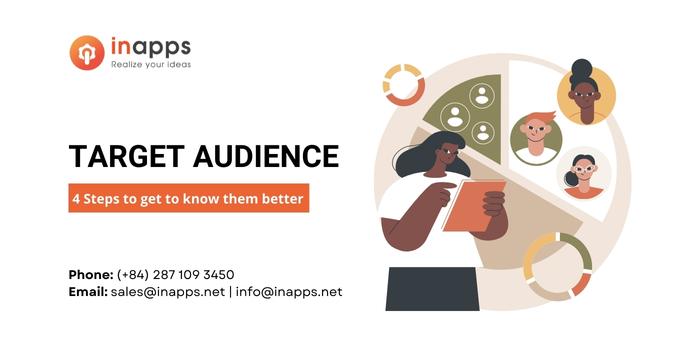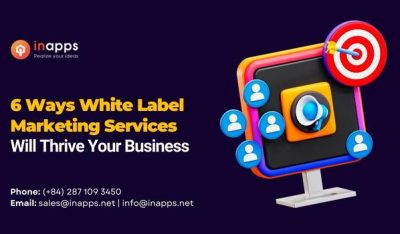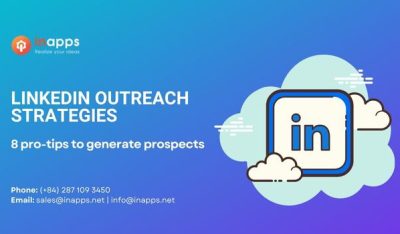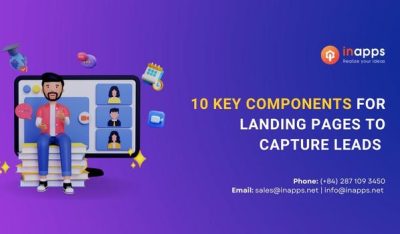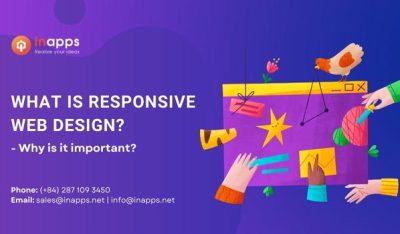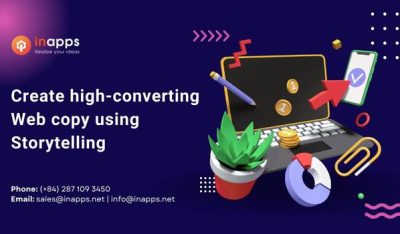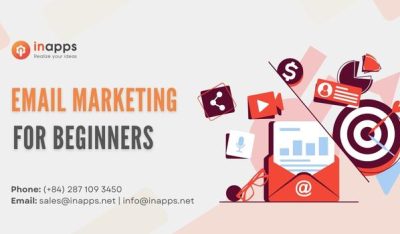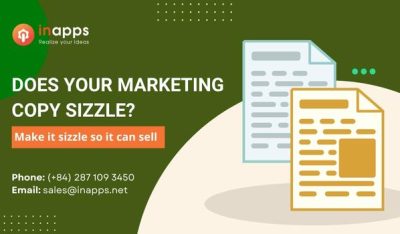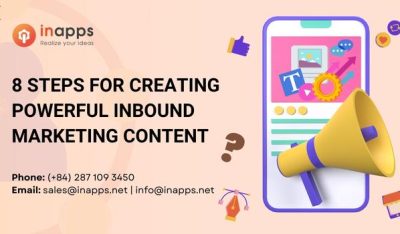- Home
- >
- Inbound Marketing
- >
- Target Audience – 4 steps to know them better
4 Steps to Get To Know Them Better is an article sent to you by the InApps editorial team. Hope readers will have more useful knowledge at www.inapps.net
Do you feel like you’re spending tons of money on advertisements but aren’t getting any conversions?
This may be because you don’t have a good understanding of your customers and who your target audience is.
The perfect advertisement means nothing if it isn’t being sent to the right people.
That is why it is imperative that you know the needs of your target audience. In this blog post, I am going to help you learn how to understand your audience so that you can appeal to them on a more personal level.
I will be addressing the questions:
- What is a target audience?
- Why is having one important?
- What are 4 steps you can take to get to know your audience?
Let’s get started.
What Is a Target Audience?
Your target audience is your business’s current or ideal customer, depending on which you want to focus on. Your target audience can consist of people who are already currently buying your product or service, or it can be a group that you think you can turn into customers.
It consists of a list of demographic and psychographic traits that are shared by your selected audience. Some classifiers may be age, location, gender, income, or interests — the more specific you can be, the better.

After creating a target audience, you should get to know them and identify their pain points and needs to better advertise to them. Tailoring your content to your target audience will make them more receptive to your messaging.
Why Does Knowing Your Target Audience Matter?
Save Money on Advertising
When you know your target audience, you no longer just throw paid advertisements into the abyss hoping it will get someone’s attention. This will ultimately help you get a greater return on investments (ROI).
While the size you are targeting may be smaller, the conversion rate will be greater. In the big picture, targeting your audience will give you a higher return on your ad spending. This is because your message will be going to people who are actually interested in what you have to offer.
Produce Highly Effective Content
When creating content like blogs, advertisements, lead magnets, or brochures, you want to include tailored content that addresses your audience’s needs and provides information that is valuable to them.
Instead of sending the same lead nurturing emails to everyone in your database, segment by buyer persona and tailor your messaging accordingly. This is an easy task if you know your audience.
Improve Landing Page Conversions
When the content on your landing page is tailored to your audience, you will see an increase in conversions. This is because you can create your message to reflect your audience’s pain points and make sure you are addressing their needs.
Knowing your audience will also help you create the perfect call to action that will have your audience and potential customers converting.
Now that you understand the importance of knowing your target audience…
4 steps that you can take to really get to know your target audience.
1. Do Your Research
First, conduct research on the behavior and demographics of your target audience. This is your chance to make sure you are not leaving out any key segments that would be the perfect potential customer.
Another method of research that you can use to help identify your business’s best route is conducting a SWOT analysis. This will give you a deeper understanding of your strengths, weaknesses, threats, and opportunities and help guide you on your next steps.

Another great research tool that you can use to research your target audience is Google Analytics. Using this tool, you can see who is already visiting your website and help you determine if you want your target audience to reflect that or create a new one that addresses a market that isn’t already aware of your brand.
2. Look to Your Competitors for Guidance
Next, do some research on your competitors. While you don’t want to copy them because you have your own differentiator and value, you can look at them for reference.
Your competitors may already be talking to your target audience, so you can use them as an example of what works well and what doesn’t. This can give you an idea of what it is your audience is looking for and what they place value on.
Certain things to look out for are: tone of voice, channels being used, and values being offered.
3. Engage With Your Current Customers
There are many ways to engage with your current customers, but I will list a few of the best tactics below.
Conduct Surveys
The best way to truly know what your customers want is by simply asking them! Come up with a list of questions you want to ask your audience and then send out a survey. Make sure that the questions you ask are relevant and that the answers will contribute to your goals.
In order to get results, you may have to add an incentive like a discount or special offer. Once you have gotten a decent amount of responses, you can gain insight into what matters most to them.
One thing to look out for when creating your survey is making sure all of your questions and answers are measurable. That way you aren’t left with a bunch of data that you can’t make sense of.

Monitor Comments and Engagement
If you are already putting out content, monitoring comments and engagement is the best way to see who your audience is and how they are interacting with your brand. Seeing exactly what content they are engaging with is a great way to get a better understanding of what interests them.
Keeping an eye on your metrics will allow you to see what they value, and then you can adjust your plans accordingly.
Perform Social Listening
If you do not have your own content to look at, try assessing how your audience engages on social media with other brands and influencers.
This will give you a better understanding of what trending topics they care about or what type of messaging is attracting them and eliciting a response.

You can use tools such as Hootsuite Insights or Sprout Social for social listening.
4. Create a Buyer Persona
What Is a Buyer Persona?
Buyer personas are fictional, generalized representations of your ideal customers. They help you understand your customers (and prospective customers) better and make it easier for you to tailor content to the specific needs, behaviors, and concerns of different groups.
The strongest buyer personas are based on market research and insights gathered from your actual customer base (through surveys, interviews, etc.). Depending on your business, you could have as few as one or two personas, or as many as 10 or 20.
Note: If you’re new to personas, start small! You can always develop more personas later if needed.
Negative Buyer Persona
Determining your buyer persona is important, of course, but determining who isn’t your buyer persona can be equally important. While a buyer persona is a representation of an ideal customer, a negative — or “exclusionary” — persona is a representation of who you don’t want as a customer.
This could include, for example:
- professionals who are too advanced for your product or service.
- students who are only engaging with your content for research/knowledge.
- potential customers who are too expensive to acquire.
The reason you may classify them as a negative buyer persona is because of a low average sale price, their propensity to churn, or their unlikeliness to purchase again from your company
How Do You Create a Buyer Persona?
Buyer personas are created through research, surveys, and interviews of your target audience. That includes a mix of customers, prospects, and those outside of your contact database who might align with your target audience.
Here are some practical methods for gathering the information you need to develop personas:
- Interview customers either in person or over the phone to discover what they like about your product or service.
- Look through your contacts database to uncover trends about how certain leads or customers find and consume your content.
- When creating forms to use on your website, use form fields that capture useful personal information.
For example, if all of your personas vary based on company size, ask each lead for information about company size on your forms.
You could also gather information on what forms of social media your leads use by asking a question about social media accounts.
- Take into consideration your sales team’s feedback on the leads they are interacting with most.
What types of sales cycles does your sales team work with?
What generalizations can they make about the different types of customers you serve best?
Example:




Now you try it!
Create your own customer persona for your business based on our example.
Get To Know Your Target Audience
Now that you understand the basics of getting to know your audience, it is time to put it all into practice.
Remember — the more niche you can get with your target audience, the more relevant your advertising will become. The better you know your audience, the higher your conversion rate will be.
Did you find this blog helpful? Let me know in the comments which step you are working on!
Follow this to make sure you’ve got 4 Steps to Get To Know Them Better. Save and share with those around you these extras.
To learn more about Inbound Marketing
Contact us:
www.inapps.net
Let’s create the next big thing together!
Coming together is a beginning. Keeping together is progress. Working together is success.




